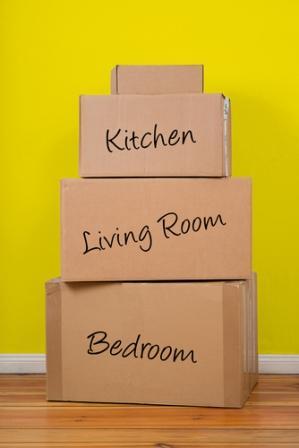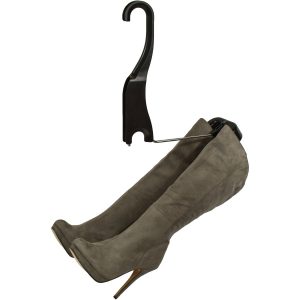 Moving into a new house or apartment can be a very exciting event, even a new chapter in life.
Moving into a new house or apartment can be a very exciting event, even a new chapter in life.
Unfortunately, it also involves moving into a new house or apartment. As everyone knows, moving can be very involved and stressful. It can feel overwhelming to even think about taking all of your belongings as they are currently arranged and organized, pack them carefully to avoid any damage or breakage, and then unpack them and place them wherever is best in surroundings that are relatively unfamiliar to you.
To make this process easier, we’ve compiled a list of suggestions for how best to get organized for a move.
#1: Use a notebook to make your plans
First of all, buy a notebook with pockets and dedicate it to documenting your moving experience. Use it to write down dates for deliveries or cable installment. Tuck all moving related invoices and receipts into a pocket (you’ll be thankful you did this next tax season). Use another pocket for keeping track of paint samples, wallpaper options, or other decorating ideas. If you need to keep track of maps or airplane tickets related to the move, this is a great place to put them. Everything move-related goes here.
Before you even think of moving anything, measure the dimensions of the new space that you’re moving into — all of it — especially the doorframes, hallway widths, and stair corners. If you don’t, you can’t be sure that all of your belongings will fit like they should, particularly your larger furniture items like sofas, bookcases, and bedroom suites. The longer you have to prepare for the move, the more efficient use of space you will be able to make in your new dwelling.
Before you box anything up, do a complete purge of items you aren’t using or no longer fit your lifestyle (or your body — it happens to all of us eventually). Decluttering at this point in time isn’t just advisable, it will save you time, energy and money. Anything you give to charity, you won’t have to pay someone to move and you won’t have to unpack and find a place for in your new digs. If, during this reorganization, you decide to put some items in storage, make sure you keep a good inventory of what’s going where.
Make a list of destinations for your belongings, and keep it simple: bedroom, guest bedroom, kitchen, living room, bathroom, basement. The day of the move, give it to your movers and post it centrally so that everyone can see it and understand it. Using a diagram can be especially helpful in case some of the movers don’t have the greatest reading comprehension.
#2: Use labels to tell the movers where things are supposed to go
When you box things up, make sure to mark on the box both what’s in it and where it’s going. If you just mark what is in the box, you have to take time to decide where it’s going again when you’ve moved it. If it has a place in your old house, it will have a similar place in your new one. Save yourself the stress of having to think through what you don’t have to. This also has the benefit of removing the burden of answering questions about where hundreds of boxes go on moving day. You can tell your family, friends, or your movers, “Read the box,” instead.
#3: Make everything easy to take apart and put together
Set aside any useful instructions for either assembling furniture or electronics in a large sealable plastic bag. The day of the move, make it available and handy to your movers.
If furniture needs to be disassembled, you can usually get instructions to print out from the manufacturer’s website. If they’re not available, you can always write it out on a piece of notepaper.
Keep some tools handy. Learn how to take a door off of its hinges in case you have to make room for awkward furniture. Easing large pieces through narrow openings is one of the challenges of moving, and it’s why measuring everything ahead of time is so valuable. If you have big furniture, put it in the room before other items so that nothing gets bumped or trampled by frustrated movers trying desperately to make things fit.
#4: Save money on your move by packing up as much as possible ahead of time
Wrap your own furniture with moving blankets or whatever you have handy in order to save money on labor. If you’d rather the movers do it, make sure your thorough decluttering is already done so that you don’t waste time and money having your movers clean up the house for you.
Remember, there are many reputable moving companies out there, but you don’t know who will be doing the work the day of your move. Leaving a bad review on Yelp won’t bring back your great-grandmother’s china. If it’s important to you, make sure you know it’s been packed or wrapped to your satisfaction. Anything delicate should be wrapped before it’s put into a box. Trucks bounce around, so you should expect it to be able to take some shocks before you put it away.
Use new cardboard boxes. They’re easier to stack and they’re less likely to fall apart. Saving a little money by reusing boxes isn’t worth it if it results in breaking your prized possessions. If possible, make your larger and heavier boxes more accessible to the movers – those tend to go in the back of the truck.
Get an estimate of how much you have to move and what it’ll cost you before you have anyone sends any trucks over. It can be a big expense and waste of time to order an extra truck to come after you’ve already got one there. Getting a number ahead of time from the movers will also give you some more negotiating leverage in case something goes wrong later on.
Ultimately, like anything else, organizing for a move is like organizing for everything. It involves thinking of and preparing for any possible challenges, sorting out items into their best arrangements or spots, and using the resources you have to the maximum. If you’ve done that ahead of time, your move will go much more smoothly and you’ll be able to settle in and enjoy your new home sooner.



Thanks, glad to hear that it was helpful!